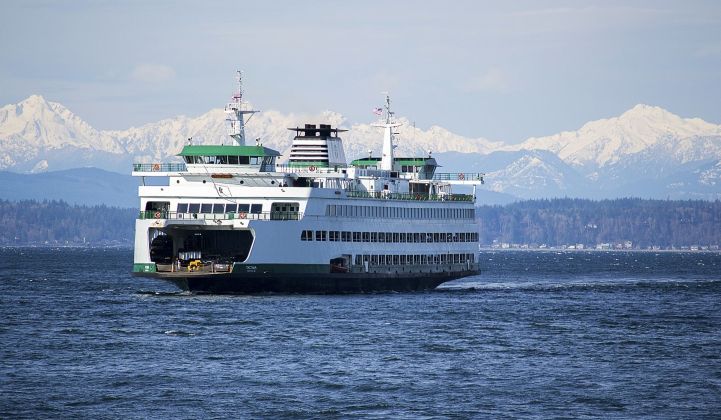Washington State Ferries, which runs the second-largest ferry system in the world, is switching from diesel to batteries amid a growing trend toward electrification in shipping.
Ian Sterling, public information officer for Washington State Ferries, said the move would cut the cost and pollution caused by the current annual consumption of almost 20 million gallons of diesel across a fleet of 22 vessels ferrying 25 million people a year.
The government-owned ferry operator’s annual fuel consumption is on par with that of a "midsize airline,” he said, making it the state’s biggest diesel polluter.
Washington State Ferries is among the bodies mandated to strive for zero emissions under legislation introduced by state governor Jay Inslee, said Sterling. But the switch to batteries is "not just because the governor said [to do] it."
“This is a good idea because it quiets the boats [while] obviously removing tons of diesel fuel emissions. But even if you’re not an environmentalist, this is a good idea for the taxpayer because we expect it to pay for itself relatively quickly, based on the price of fuel. It saves millions of dollars annually.”
Washington State Ferries had looked at using hybrid or liquid natural-gas-powered vessels as far back as around 2012, said Sterling, but found the technology wasn’t mature enough. Now, improvements in battery technology coming out of the automotive sector are prompting a second look.
As a result, Sterling said people in Washington state would likely be riding on some sort of electric-powered ferry “in the next couple of years.”
Not as easy as it sounds
Nevertheless, it will take a long time to electrify the entire fleet because of difficulties in installing charging facilities and signing electricity supply agreements in some locations. Washington State Ferries runs services across most of Puget Sound, which covers more than 1,000 square miles.
The ferry operator’s electrification program will start with the most polluting vessels, three Jumbo Mark II ferries, which consume 5 million gallons of fuel a year between them and are soon due to have midlife propulsion system upgrades.
As part of the upgrades, each vessel will have two of its four diesel generators and locomotive engines replaced with battery systems supplied by Siemens.
Likely the first ship to undergo the conversion will be the MV Wenatchee, an iconic vessel that has appeared in TV series such as Grey’s Anatomy.
Switching the three Jumbo Mark IIs to fully electric operations would cut emissions by an estimated 48,000 metric tons of carbon dioxide a year, the equivalent of taking 10,000 cars off the road.
Meanwhile, Washington State Ferries is also initiating a new-build program for electric ferries that should see Olympic class electric-diesel hybrids entering operation three years from now.
The Washington State Ferries program will also require a major quayside electrification effort, with Seattle-Bainbridge Island and Mukilteo-Clinton likely to become the first routes with charging points at both ends.
Washington State Ferries was far from unique in moving away from diesel. British Columbia Ferry Services, a major private-sector operator, moved to liquid natural gas some time ago and is now eyeing electrification of its fleet, Sterling said.
Global trend
August saw the launch of the world’s largest all-electric ferry to date, a 200-passenger, 30-car carrying vessel called Ellen covering the stretch between Fynshav and Søby in southern Denmark.
And in July the U.K. government announced that all new ships ordered for its waters from 2025 onward would have to be equipped with zero-emission technology.
Citing data from the Maritime Battery Forum, Jostein Bogen, global product manager for energy storage and fuel cells at ABB Marine & Ports, said there are currently 101 battery-operated car and passenger ferries in operation worldwide, with a further 76 under construction.
“Ferry electrification is expected to continue growing in the future,” said Bogen. “We are already seeing numerous cases of application across Scandinavian countries, and the technology has now started spreading to other parts of the world as well.”
Recent ABB projects include the electrification of the Icelandic Road and Coastal Administration’s Landeyjahöfn to Westman Island ferry and a fleet of new Maid of Mist all-electric ferries to take tourists to the Niagara Falls, Bogen said.
“The main drivers we see are global and local emissions regulations,” he said. “Additionally, we see that public opinion is becoming a strong driver. There is an increased awareness about the importance of sustainable maritime transportation, including ferries.”




